Born on this date in 1901, Aurèle Joliat began playing organized hockey in 1916 in his native Ottawa, Ontario with the Ottawa New Edinburghs. The following season of 1917-18 saw him suit up for the Ottawa Aberdeens prior to a return to the New Edinburghs for the 1918-19 season, scoring 5 goals in 8 games. The left winger showed a glimpse of what was to come with 12 goals in 7 games of the 1919-20 season to lead the league in scoring.
He played for the Iroquois Falls Papermakers and Iroquois Falls Flyers over the course of the next two seasons, including once accepting $500 from gamblers to throw the championship game of the 1920-21 Northern Ontario Hockey Association season before proceeding to score six goals in the game to lead Iroquois Falls to title.
He escaped town before the unhappy gamblers could exact their revenge for being double-crossed and made his way out west to Saskatchewan to play for the Sheiks of the Western Hockey League, but that plan was foiled when Joliat was suspended by the NOHA, which the WHL honored, forcing him to sit out the 1921-22 season.
Before he could ever suit up for the Saskatoon, his career path was changed forever by a seemingly unrelated transaction, as the Sheiks had signed away Montreal Canadiens 12 year veteran and star Newsy Lalonde.
Joliat was subsequently awarded to the Canadiens as compensation for losing Lalonde, a move initially unpopular with the fans in Montreal, who viewed the unknown Joliat as little solace for having lost the best player in hockey.
Aurèle Joliat
Joliat made the fans take notice however, when he finished third in scoring for the Canadiens in 1922-23 with 22 points, as his 13 goals alone equalled the departed Lalonde's entire point total from the previous season.
The following season he raised his goal total to 15 while playing on a line with Billy Boucher and new arrival Howie Morenz, who would go on to become a Canadiens legend in his own right.
Morenz and Joliat
The club won the O'Brien Cup as NHL champions after defeating the Ottawa Senators 1-0 and 4-2. They then advanced to the Stanley Cup playoffs, where they swept four games while eliminating first the Vancouver Maroons of the Pacific Coast Hockey League 3-2 and 2-1, and then the Calgary Tigers in dominant fashion 6-1 and 3-0 to claim the first cup of Joliat's career and only the second in Canadiens franchise history.
He cemented his place as a fan favorite during the 1924-25 season by leading the Canadiens with career highs in goals, with 29, and points, with 40. Aside from finishing second in the NHL in goals, third in points and fourth in assists, he also was sent off for 85 penalty minutes in just 24 games. While the 5' 7" and 136 pound Joliat was one of the smallest players in the game, he soon developed a reputation around the league for toughness and never backing down when challenged or intimidated, which earned him one of his nicknames, "The Little Giant."
Joliat wearing the 1924-25 Canadiens World Champions sweater
The 1927-28 season saw Joliat record 28 goals, the second best total of his carer, which came during a four year streak of finishing second in team scoring to Morenz from 1926 to 1929.
Montreal would climb to the top once again following the 1929-30 season by winning the Stanley Cup as NHL champions, as the PCHA and WCHL had ceased to exist by now. With the NHL expansion to 10 teams (up from only four the last time the Canadiens won the cup), Montreal needed to defeat the Chicago Black Hawks, the New York Rangers and the Boston Bruins, going undefeated by winning five games and tying one.
The 1928-30 Montreal Canadiens
Joliat's third Stanley Cup arrived the following season as Montreal successfully defended their title with wins over the Bruins and Black Hawks.
The 1932-33 season saw "The Mighty Atom" lead the Canadiens in scoring for the second time with 18 goals and 39 points before repeating the feat in 1933-34 with 22 goals and 37 points, the third and final 20 goal season of his career. Following the season his skill and hard work were recognized when he was named the winner of the
Hart Trophy as the NHL MVP.
He would play four more seasons with the Canadiens, finishing with 16 seasons to his credit during which he scored 270 goals and 460 points in 655 games played, with his 270 goals being the third most in league history at the time of his retirement. Additionally, he added 14 goals and 33 points in 54 playoff games, as he participated in the post season during 13 of his 16 seasons. He still remains the second leading goal scorer among left wings in Canadiens history despite playing when seasons were no longer than 48 games.
Joliat was inducted into the Hockey Hall of Fame in 1947 and the Canadiens retired the #4 in his honor in 1984, a number also retired in honor of Canadiens legend Jean Beliveau.
Today's featured jersey is a 1933-34 Montreal Canadiens Aurèle Joliat jersey. After some early variations, the famous Montreal red sweaters settled into the "C" on the front becoming red with a white outline in 1925-26. In 1935-36 the team logo would disappear from the arm and the crest on the front would gain a blue outline, a look that has remained essentially unchanged ever since.
Today's jersey still sports the now smaller version of the logo on the arm and the blue outline has yet to appear on the main crest, dating this variation from between 1932-33 and 1934-35, which includes Joliat's final 20 goal season in 1933-34.

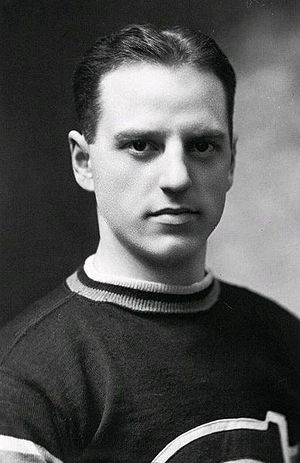
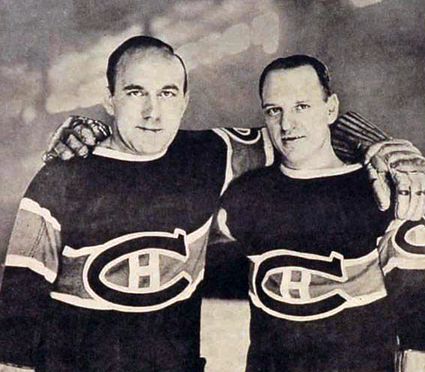
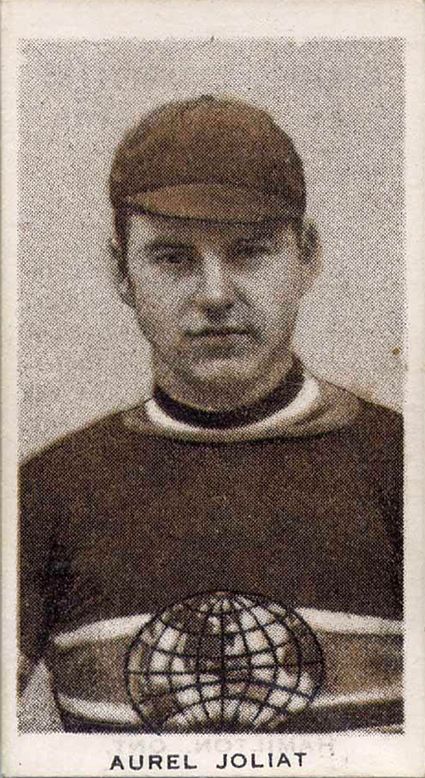
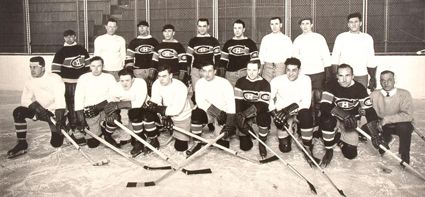
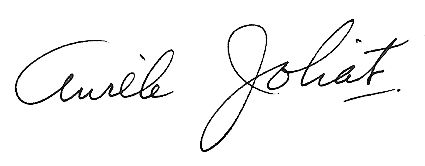
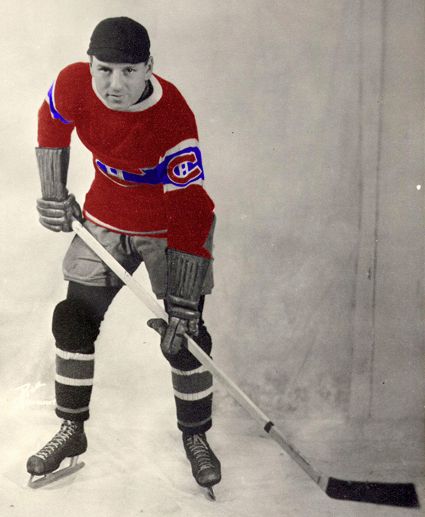










I'm not sure that I follow why Joliat, who was playing for Iroquois Falls at the time, would be awarded to the Montreal Canadiens because of the fact that the Saskatoon Sheiks signed Newsy Lalonde. Why would Iroquois Falls have been required to surrender a player because of an action taken by Saskatoon? That doesn't make any sense, unless there is more to the story.
ReplyDeleteOh yea, there was more to the story.
ReplyDeleteIt took us a while, but we did some further research and were thrilled to amend our story to fill in the missing gap between Iroquois Falls and Saskatoon, a tale of gambling, intrigue and double-cross!